
Cleveland Way, Whitby


A short trip round some Scottish favourites, with time for some sketching.



My good friend Stephen and I took advantage of the chance to use the studios of David Mayne and Mick Kirby Geddes, to have a play making some sculptures. As usual a great couple of days with some interesting people. Here are the results:
Stephen’s:


Mine:





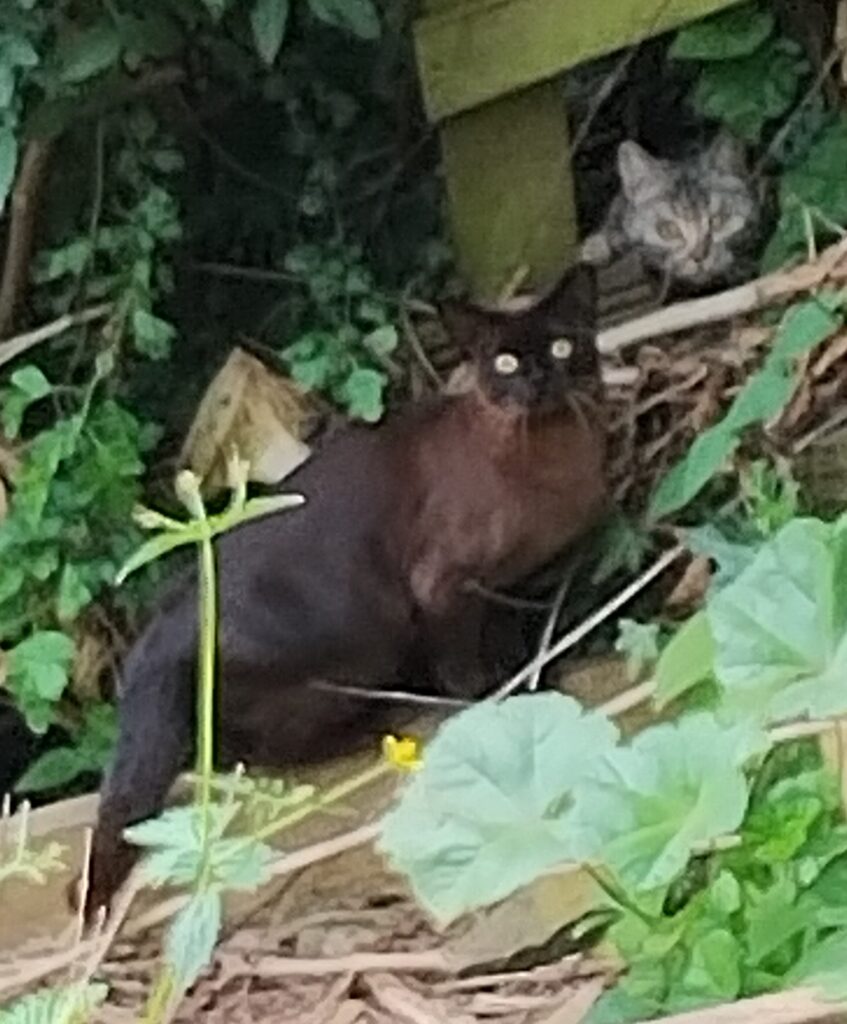



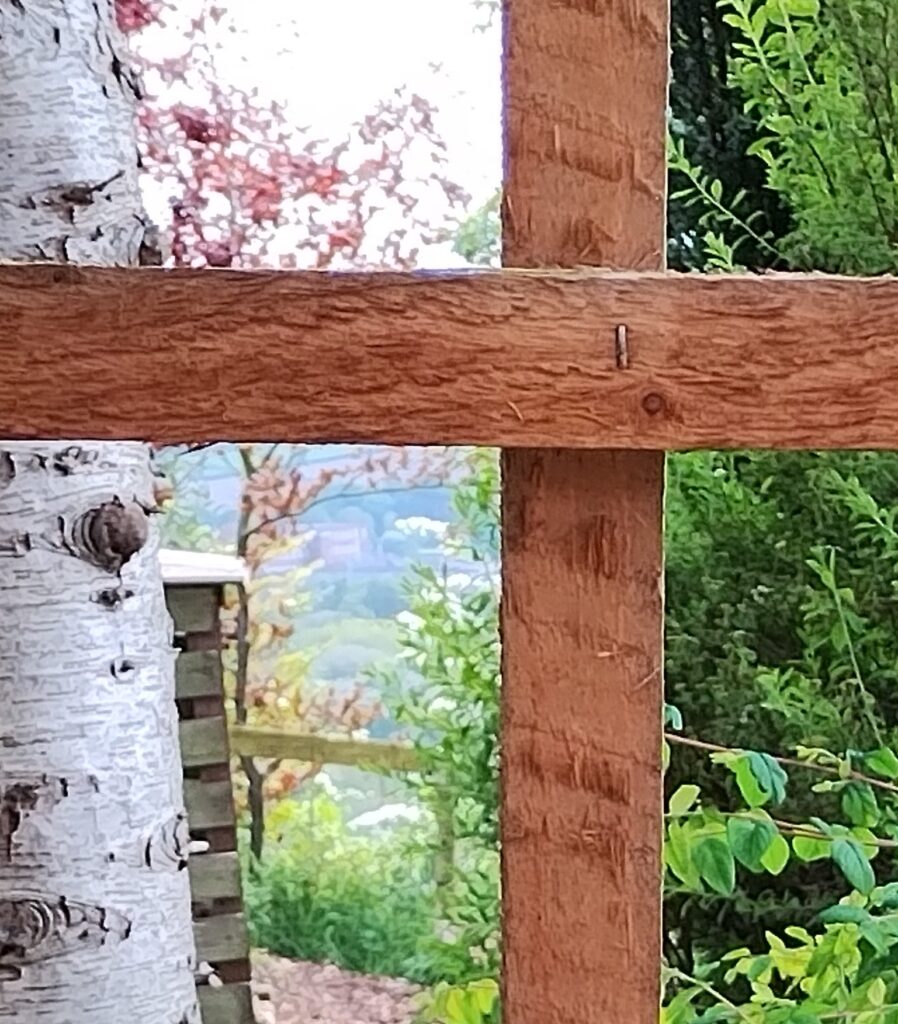
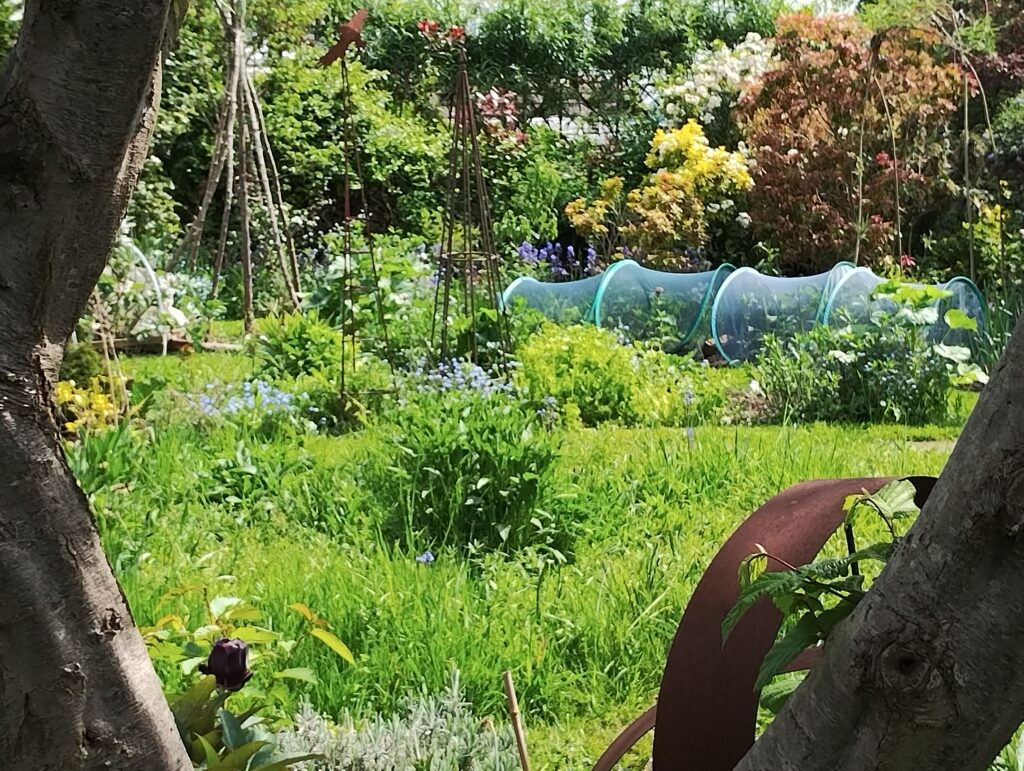







This is just a quick note on how my brain seems to have developed in relation to all the experiences I have had. I hope it might add an insight into brains in general and making the best uses of the human ability to see patterns. Who knows, you might start looking around you and begin to see similarities in things you meet every day.
After a number of below the counter jobs, I started work in a supermarket when I was 14. At the time they were generally small and ‘new fangled’.
As I learnt what to do and how to do it efficiently, my curiosity about the inner working of things started me seeing connections. This in turn led to me gaining the confidence of the management, as they realised I could be trusted with more complex tasks or with adapting to working in another store. I started to understand stock management in the shop in both the public and warehouse areas. Unloading deliveries I became aware that some came from a central supermarket warehouse and others from individual companies and that the delivery vehicles had to be loaded so the that the first delivery was at the back. I was getting my first glance into the world of logistics.
After a brief detour into Fine Arts, I was at Technical College studying, amongst other things, Business Studies and Economics. To earn some money, I worked in turn at a global book distribution company, long before Amazon came into being, and then a company that made and serviced domestic appliances and catering equipment. Both of these gave me insights into an extended range of business organisation problems and I started to see similarities in what is called ‘the problem space’.
Over time I came to work on problems including managing manufacturing processes, running libraries, controlling remote machines, connecting information with geographical locations, managing utility supplies, billing, payrolls, planning bus routes and analysing usage, running chemical works, telephone directory systems, scheduling maintenance in all sorts of situations, credit rating, help line management, managing education and training, emergency planning and on and on.
Each of these situations is different but there are many underlying similarities. As time goes by it is possible to develop the habit of seeing past the jargon and detail of any new area or problem to see these underlying patterns and to use them to speedier understanding of possible solutions and techniques. It is important to do this without failing to pay respect to the differences too.
I won’t go into all the technical jargon or theories but I will give you a couple of examples based on what I have already written here.
The first underlying example is a queue. Queues are everywhere. We all have to deal with queues. In the supermarket where I worked, we had to put orders in early enough to get them before we ran out of stock, because of the suppliers delivery queue. On our side we also had to take into account the queue for space in the warehouse, so that customers weren’t tripping over boxes piled in the store. Managing a production line is a queue problem. Managing staff job lists is a queue problem. Traffic management and logistics involve queues. There are queues in nearly all the job areas I mentioned earlier.
Related to the idea of a queue is the pipeline. A pipeline has a flow capacity it can deal with and, once it reaches that capacity, there can only be problems in trying to exceed that capacity. Interestingly we each are a pipeline and we have all been in a situation where we have felt loaded up to and beyond our capacity. In real world problems the pipe is not just a pipe but a complex network of different sized pipes and their individual performance is dependent on the whole. The internet, all the utility supplies we get, delivery companies, service points and road capacities are just some of the pipelines around us. The electric cables in your house are a pipe system and if you exceed the capacities you are likely to have a fire. Even the way a teacher delivers information to a class can be seen as dealing with different capacities to take on information and the teachers capacity to cope with different speeds of delivery.
That last one is intentionally true but slightly eccentric. It is not clear how useful it is to spot the insight into how that aspect of teaching delivery works. As I said earlier, there is a point at which you have to stop yourself getting carried away with underlying patterns.
I started this piece after I was reading about Bitcoin and its relatives and then the BlockChain technique that underlies it. This in turn was related to a whole set of other underlying techniques that is relies on. One of them goes back to a completely different and surprising area – single track railways. When a single track railway has double track ones at either end a solution is needed to stop trains meeting head on. One method of solving this is to have a box at each end that can hold a token. There is only one token and you can’t set off on the single track if you don’t have the token. The driver at one end can pick up the token and then drop it off at the other end. Systems such as this exist for canal tunnels too.
Those of you that are beginning to join the dots will have spotted the problem with the single token solution. I’ll let you work that out for yourselves but will end with the conclusion that looking for patterns and connections, learnt by a mixture of experience and training, can speed up your appreciation of new problem spaces and help you to see possible improvements and potential pitfalls. Good luck
Ruth asked me try to explain AI briefly, so here goes.
AI is, of course, Artificial Intelligence but, as no-one really knows what intelligence is, that isn’t very helpful. Artificial means that it is intelligence shown by a machine, though if we could engineer soft tissue that would probably count too. You get the idea that an explanation is not easy.
Alan Turing, of code-breaking fame, came up with the basic test, that if you can ask questions and you can’t tell whether the answers are coming from a human or not, then you could be witnessing AI. That is worth holding on to, but it is a bit simplistic to help us with what is going on around us with the sudden rapid growth of AI.
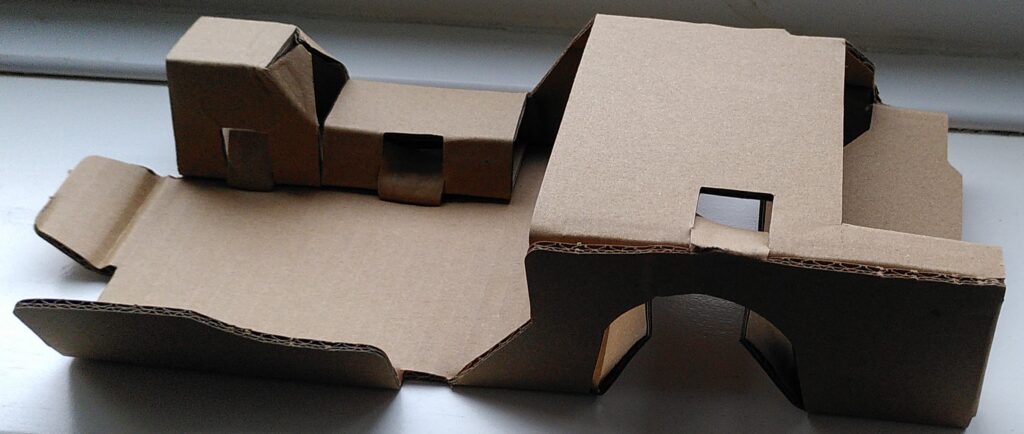
Let’s look at some example tasks.
What age are children before they can add up numbers? That is clearly a task that requires intelligence, but it something you can do with a calculator. A modern calculator is a step up in the scale of development, in that it can carry out a series of instructions, for instance to calculate an average.
What about the computers that we all have in our hands and on our desks and that have been helping with many of our affairs in the background for the last 70 years? Those can carry on doing things speedily, accurately, and repeatedly, without having to be told what to do every step of the way. These machines add very important extras to the calculator that include the word IF (IF Something is True DO Something, Otherwise Do Something Else). The quality of the outcomes of what these machines do is entirely dependent on the quality of the intelligence of their commissioners and developers.
Some tasks, such as playing chess or predicting the weather, are so complicated, that we have to introduce more complex statistics into the decisions and the outcomes become less predictable. This means that the systems can be less reliable. It is worth remembering that they are probably still more reliable than we would be, just as the calculator is better than we are at doing the calculations, providing we give it the right calculations to do. Systems like this have been proven to be better at some medical diagnosis than the average doctor, because they encapsulate the experience of the very best doctors.
What if we know that a task that we want a machine to help with is so complex that we haven’t got the time or ability to work out exactly how to give it the instructions to do the task to our satisfaction? The answer here is that we let the system make its own decisions about the accuracy of the statistical choices used in some of the IF controls. The system keeps a history of its decisions and of the success or failure of the outcomes. It uses this information to adjust its statistical controls. The system is said to be Learning. The developers can give it a training period with lots of practice and then release it into more serious situations when a certain level of competence has been reached. A good example of this is the driverless cars that are being tested on the road. They had their training period off road and are now testing out in real world situations. This is probably what we would call AI.
What About Control?
Going back to Frankenstein’s Monster and beyond, a sensible concern has been the risk of producing something that we can’t control. I have already used two examples where control creates doubt. Giving medical diagnosis to machines seems risky to most people and driverless cars create similar worries. Yet in both these cases it is arguable that the outcomes would be better if we handed over control.
This matter of control is very difficult to understand and discuss. It hits one of the key weaknesses of the brain, the ability to judge probability and risk. At one level we do it all the time and pretty successfully, without consciously thinking about it, but there are lots of situations where we are very bad at it.
Examples of what AI can/could do
An AI controlled tractor can move through a field preparing ground, sowing seed or harvesting crops quicker and more efficiently than a human controlled one. It can take notice of weather and other matters to make choices.
An AI controlled factory can/could control machines, incoming and outgoing stock, transport plans and keep track of what is being done. It can do this based on current orders, past and developing trends.
An AI controlled transport system could alter routes in real time depending on current conditions.
AI can look at vast amounts of data and pick out patterns that we would quite likely never pick out. In this way it can/could, for instance, design medicines much quicker than we ever could.
This brings us back to the amazing Elon Musk. He is looking at examples like those above and thinking how quickly they have become possible and what further possibilities there are. He is not a person suffering too much from doubt.
Is it all AI?
No. Some of the things that computer systems are doing are arguably not AI, but they are still fairly scary.
Holding information on what people and their friends show interest in on social media and using this to target ads and limit offered content, is probably not AI.
There may be some AI involved in flying and targeting weaponised drones, but they are most often human controlled and still dangerous.
What is AI bad at?
There is a long list but a delivery we had today highlights a general trend. The message said that the delivery should come between 10.53 and 11.56. This is an example of what I call spurious acuracy. Generally we would recognise immediately pointlessness of the minutes in those times. A machine of any sort has trouble with our generalisation/rounding habits. On the other hand those habits are quite hard to justify.
Back to the Origami
The picture of a cardboard structure at the top of this piece is a piece of packaging from a vacuum cleaner box. It is extremely clever, coming from a single piece of card as it does. It is strong and easily recyclable. Having all the device pieces in sturdy boxes with sturdy dividers means that they can be stacked higher and moved about more efficiently, probably using automation. Costs can probably be reduced overall. Whether AI played a part in this is in doubt, but computers certainly did in, so many ways. Whether that is a good thing overall is a much more complicated question and its elegance of design still doesn’t enamour me to James Dyson.
November 2023 and it has been wet, but today it looked good. Ruth, Simon and I set to. First off was reducing the lawn yet again and planting some grasses, kindly donated by some friends. The other two are currently planting spring bulbs in the middle of that lawn.
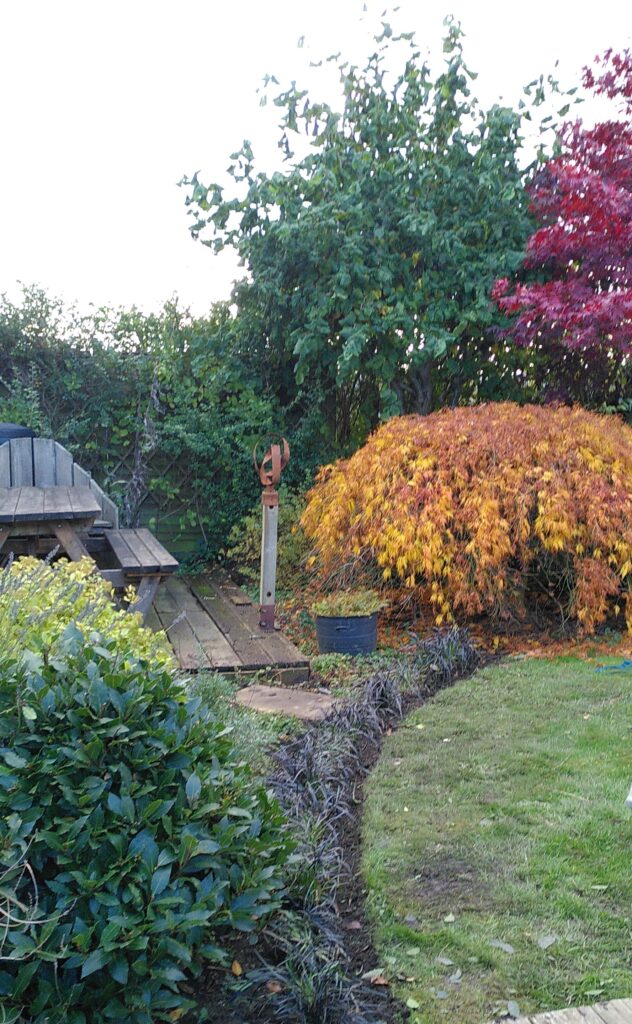
Next up was to re-fix a rail along the top cross path and plant some similarly donated raspberry canes.
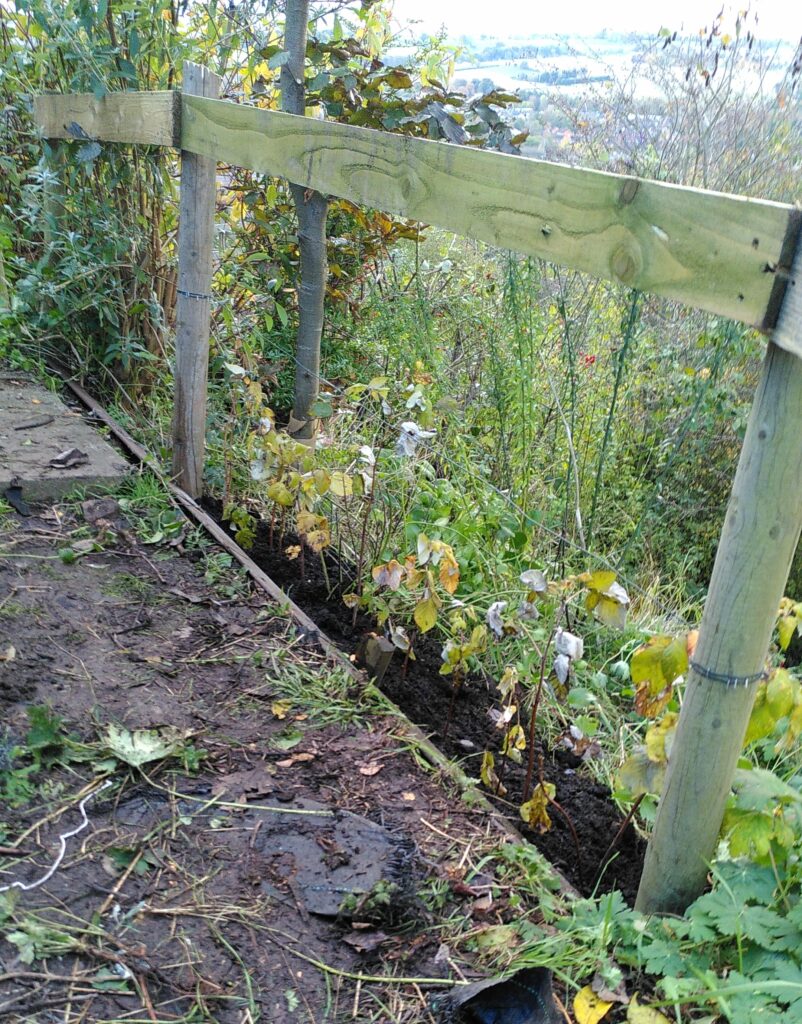

Finally, I had already halved the size of one of the benches, but it was a bit high for shorter legs than mine, so I adjusted that and then put some steps in next to it to start another access path through that bit of shrubbery. I put in a willow arch to highlight the entrance at the other end.
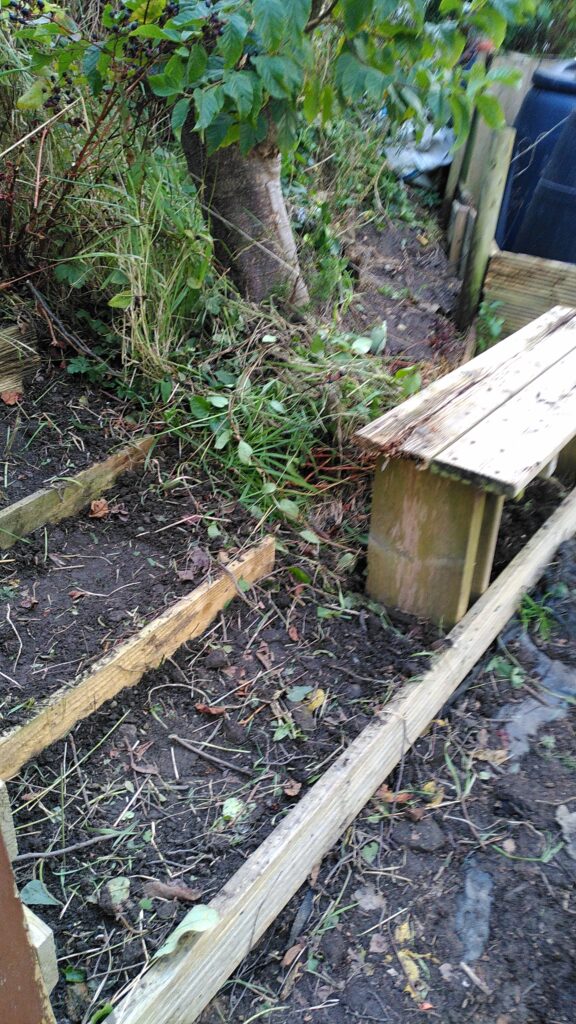
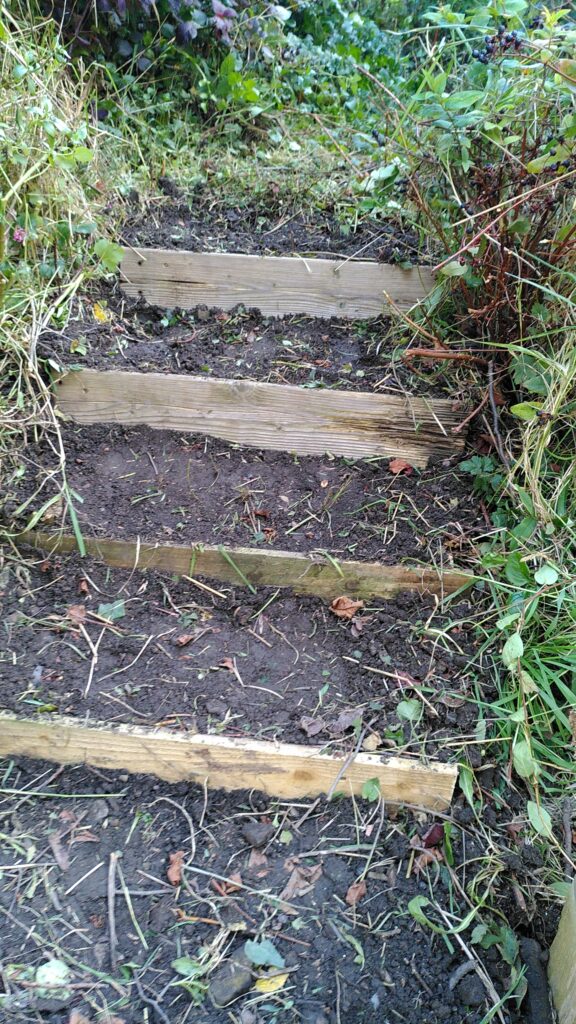
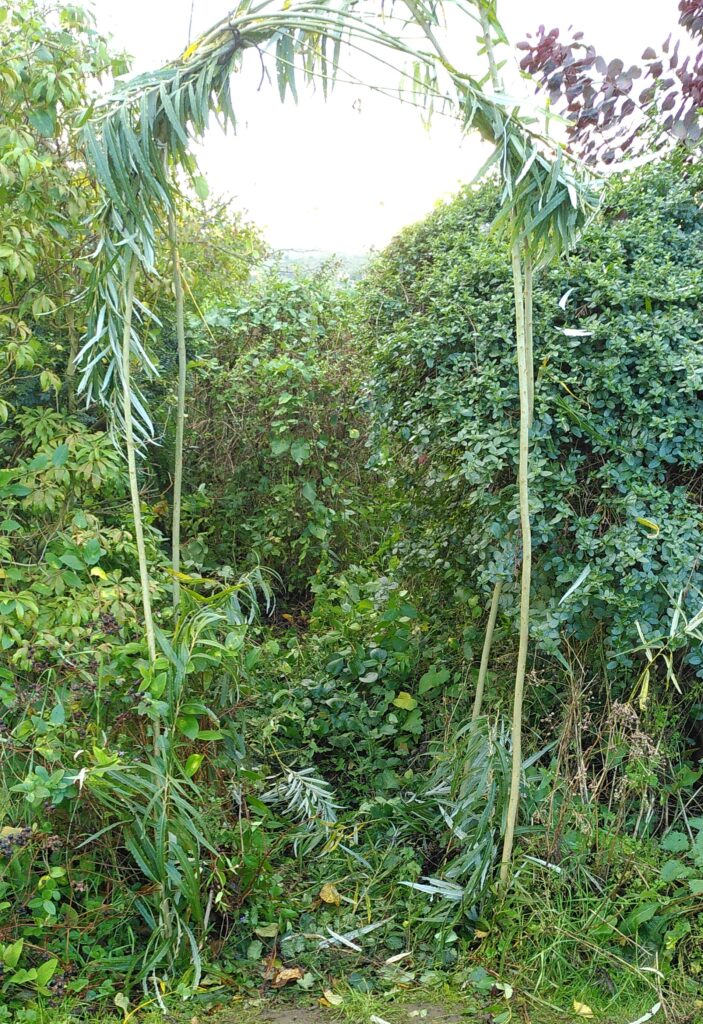
Over a couple of sessions before today, Ruth had also been clearing and planting grasses in a section of the hillside below the shelter, which are also looking good.

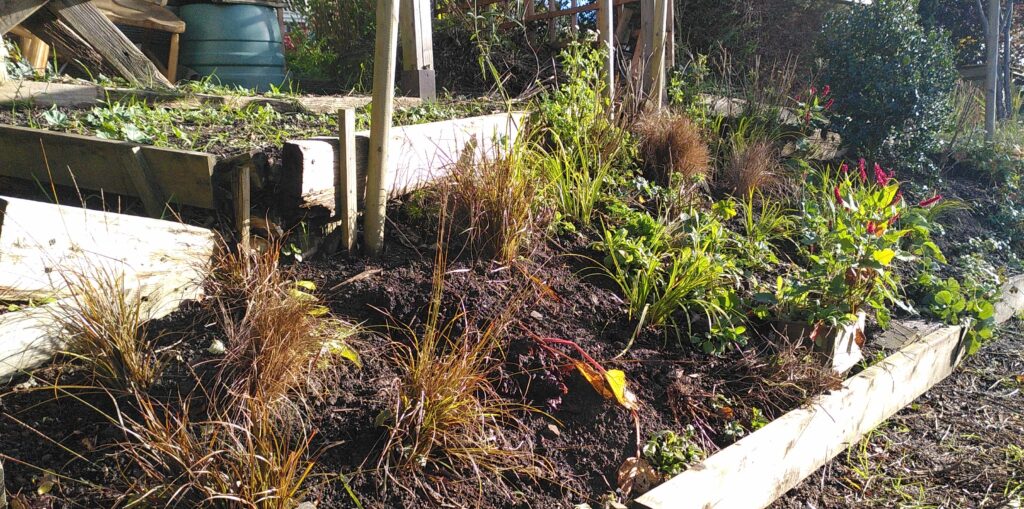
Time for a sit on the adjusted bench and look at the view.
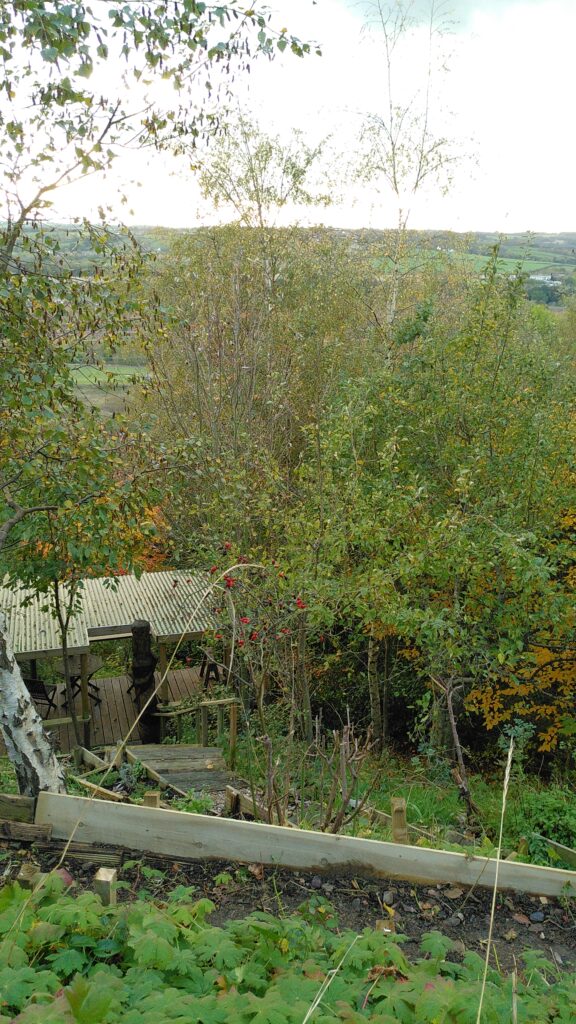

Amidst a chaos of building work, a day of path clearing, pruning and bed sorting alongside a harvest that was edible and one that spreads plants to other gardens.
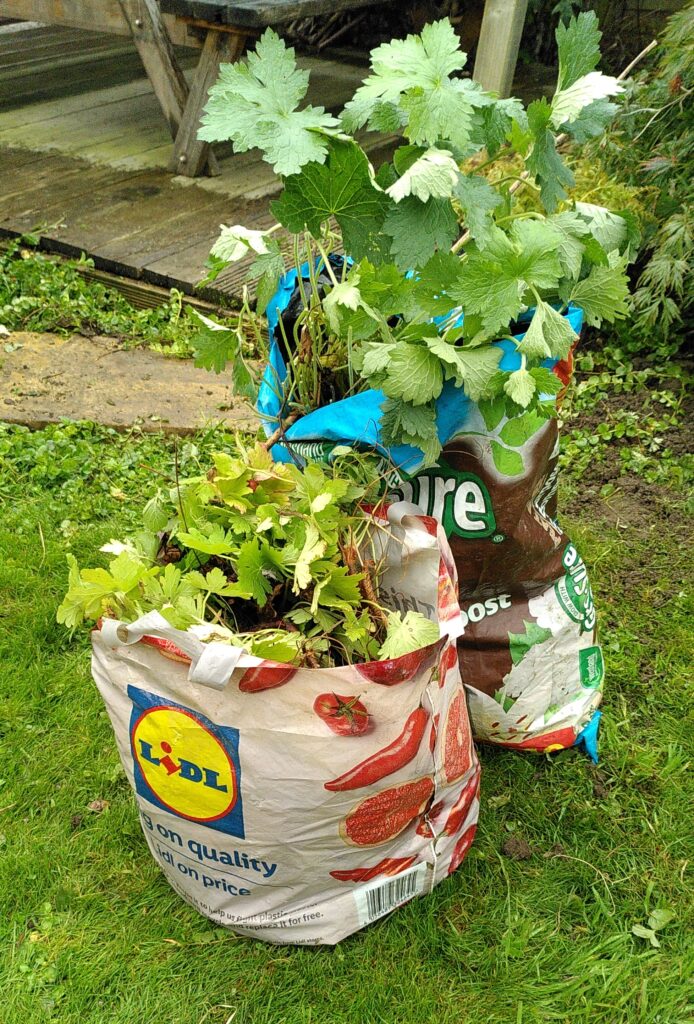
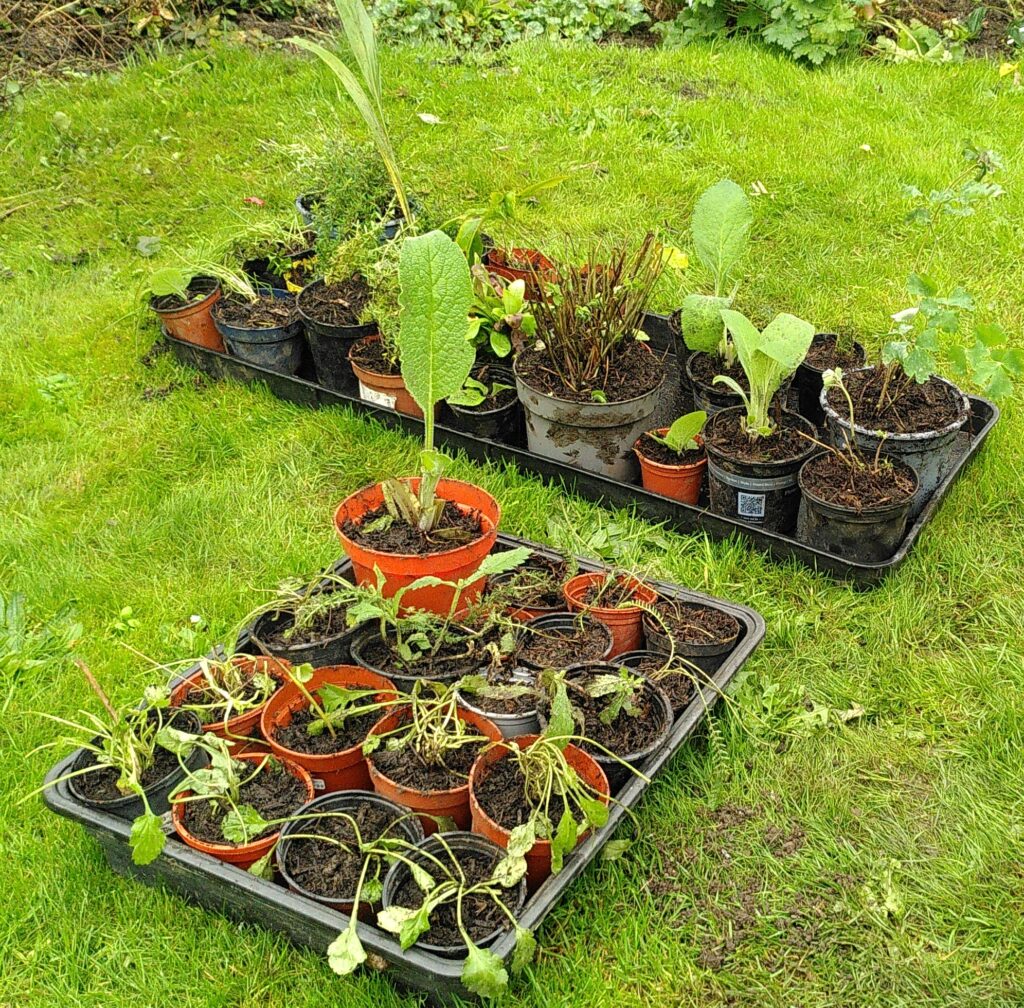
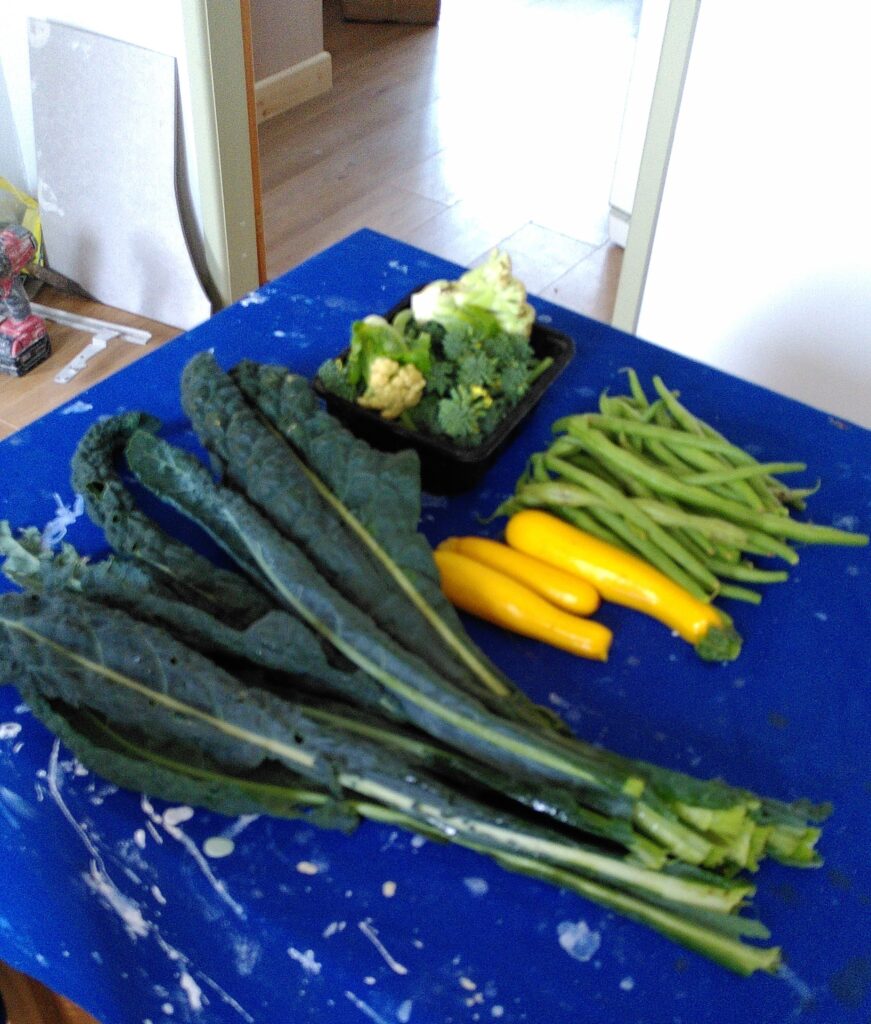
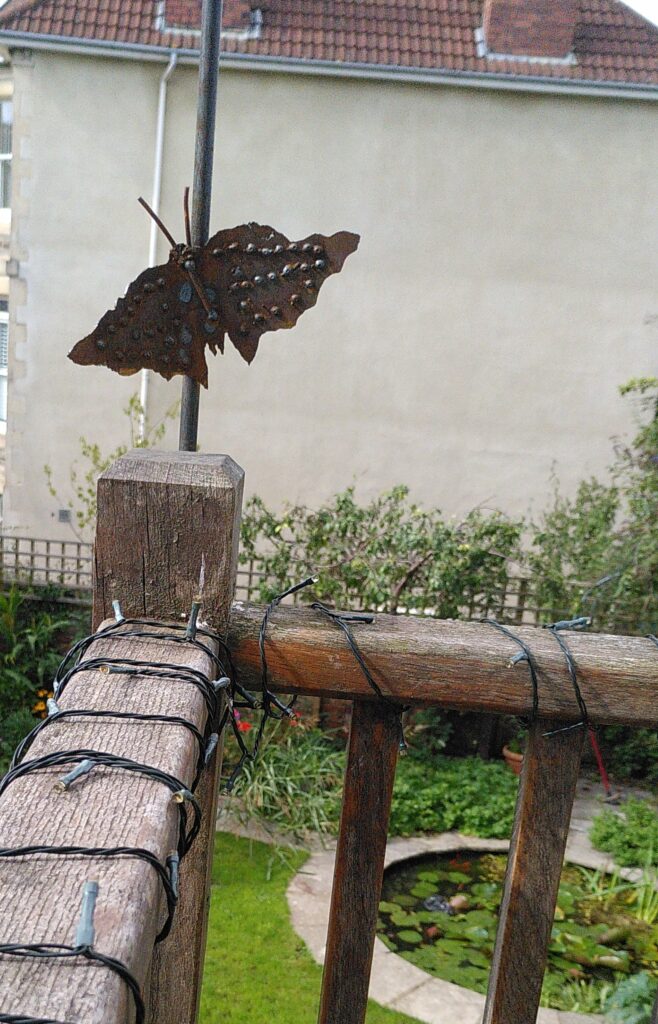
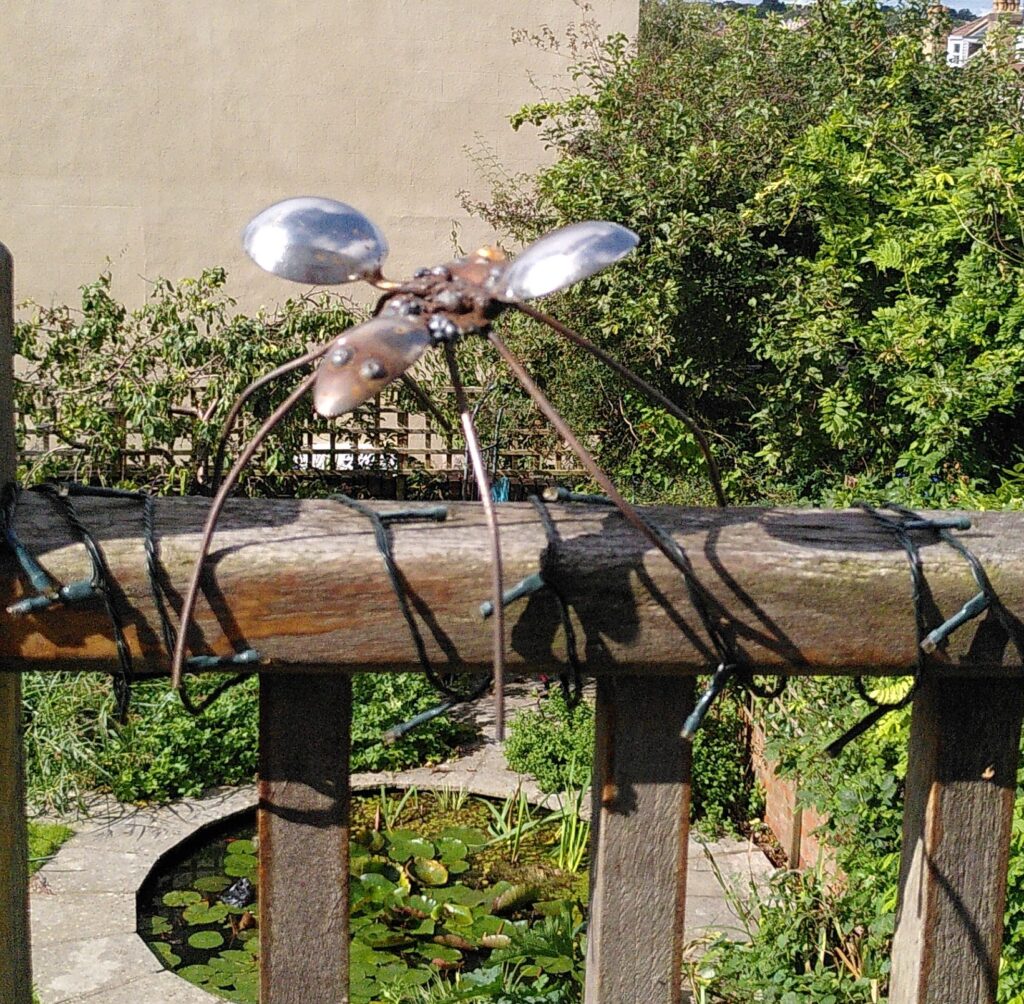

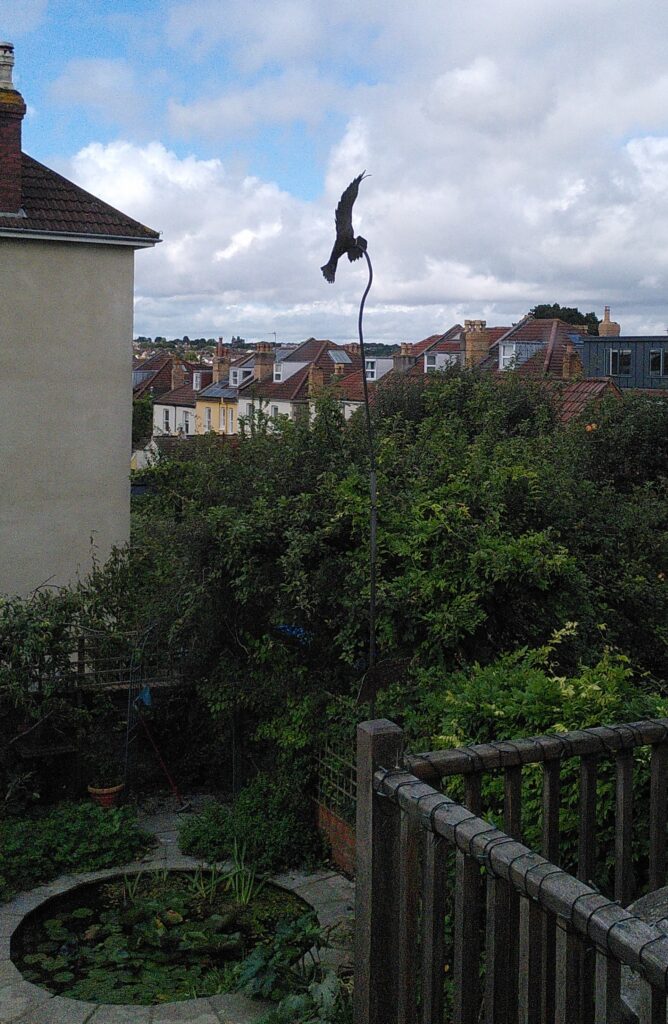

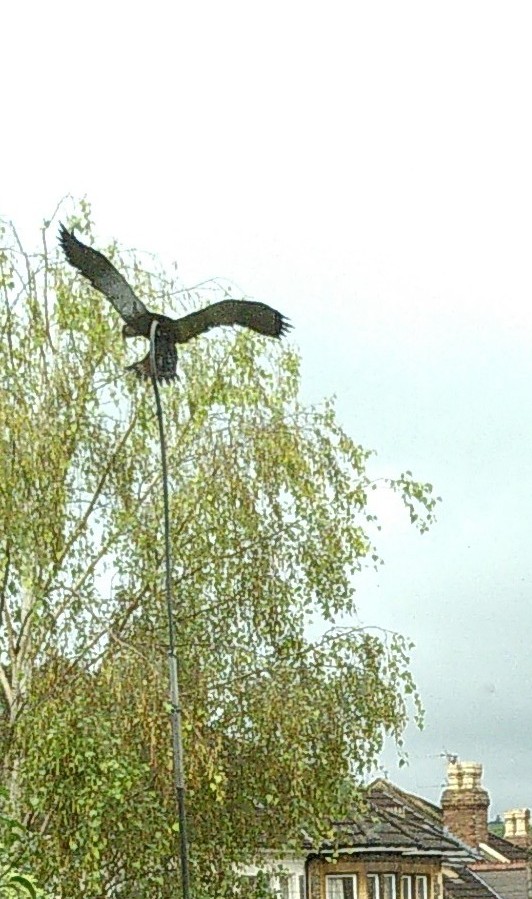
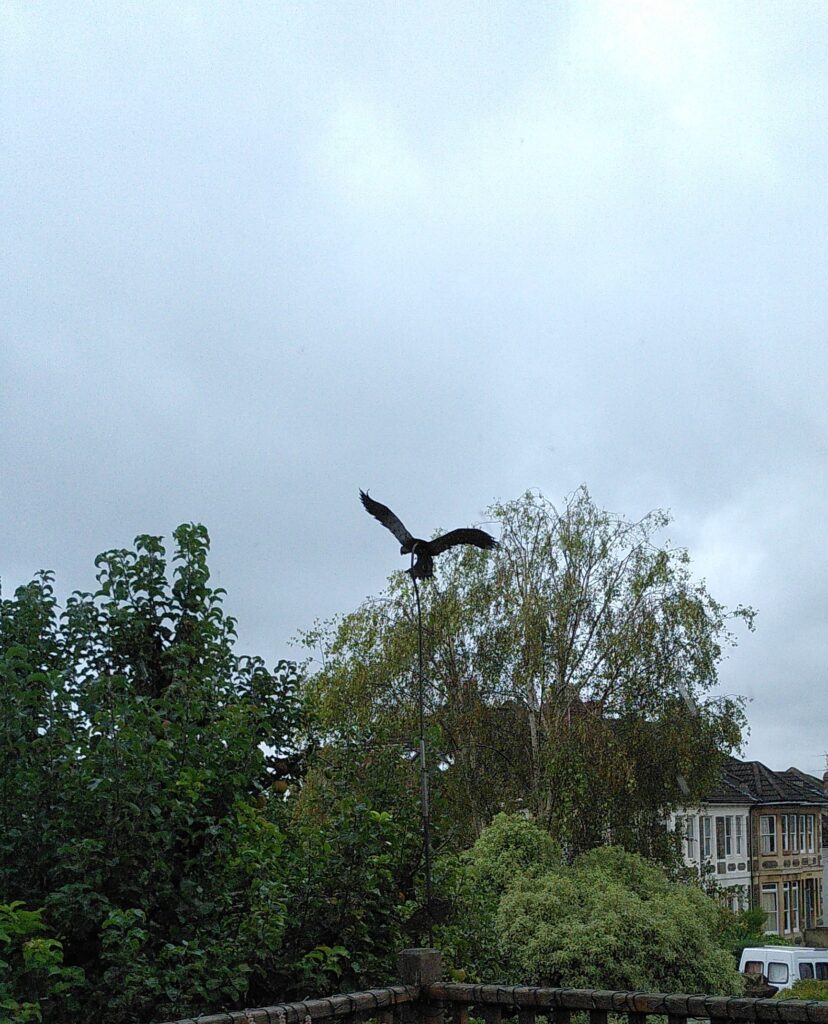
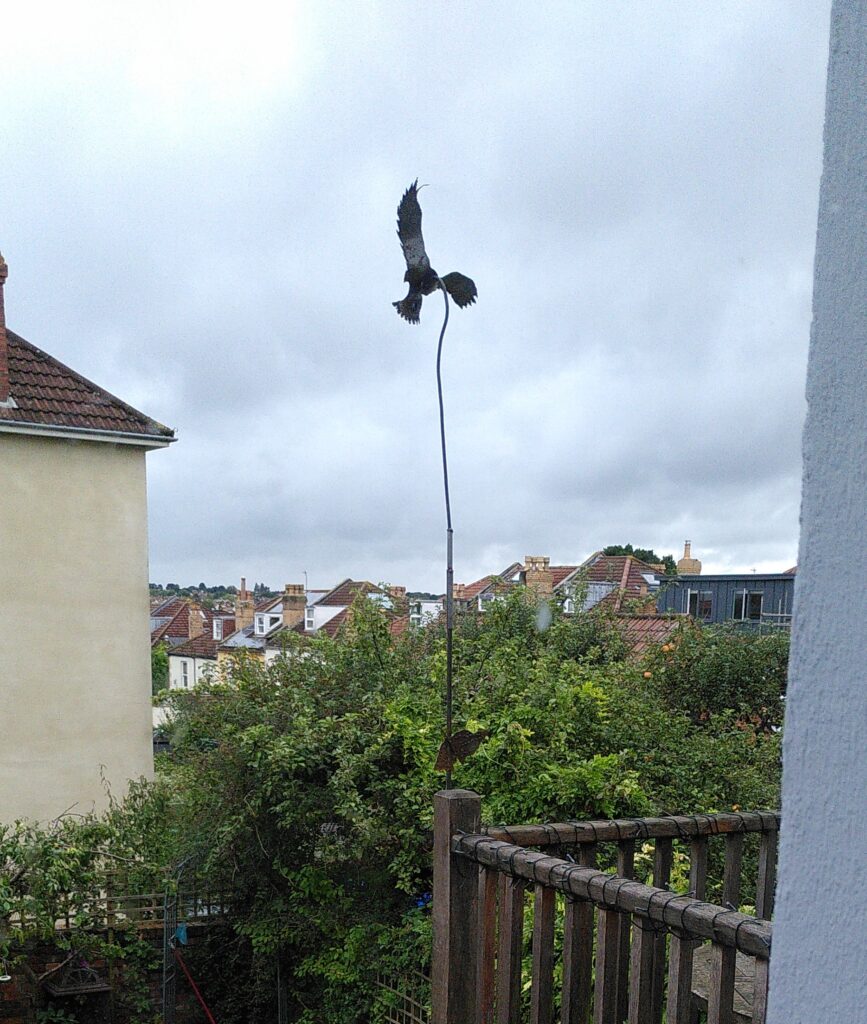



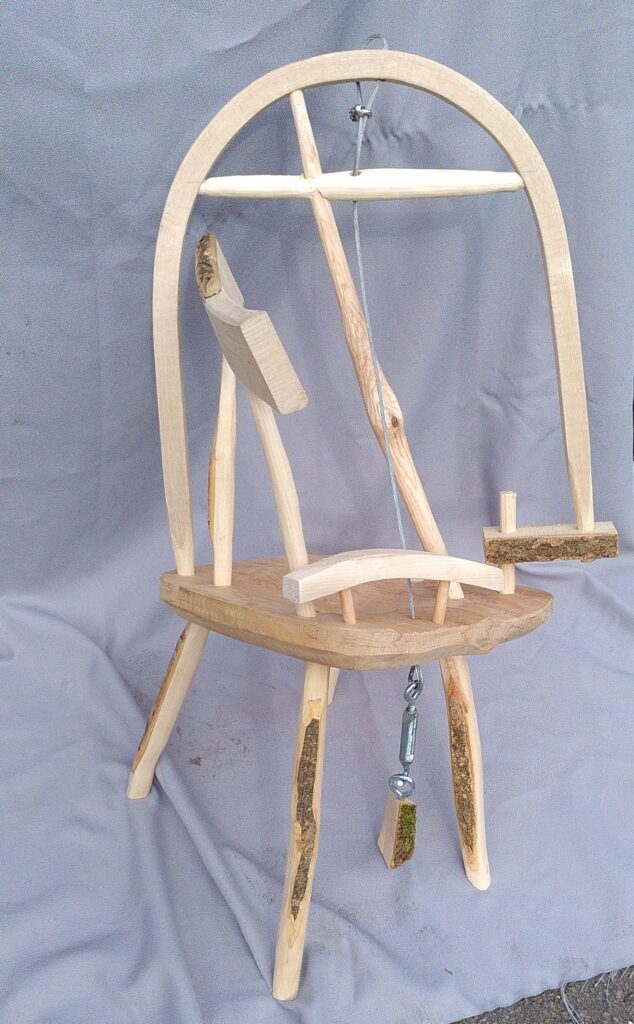



An enjoyable week down at Westonbirt Woodworks that caused a mix of amusement, admiration and bemusement. I decided to use a mix of existing bits and newly made ones to create a sculpture.
As it developed Paul Hayden likened it to Picasso’s Les Demoiselles D’Avignon, and my brother found a picture of a chair sculpture by the same, that had a resemblance. I decided that this one would be called Les Chaises not least because it is several things at once.
It is actually hard to get angles to work in this way and yet make a stable structure. Where there were imperfections in the wood I drew attention to them. There was a big fault at one side of the seat, so we cut a chunk out, making two different seat shapes in one. Correspondingly there are two different seat carving patterns.
Thanks also to Stephen for his part in my chair adventures and to all those who have encouraged me.